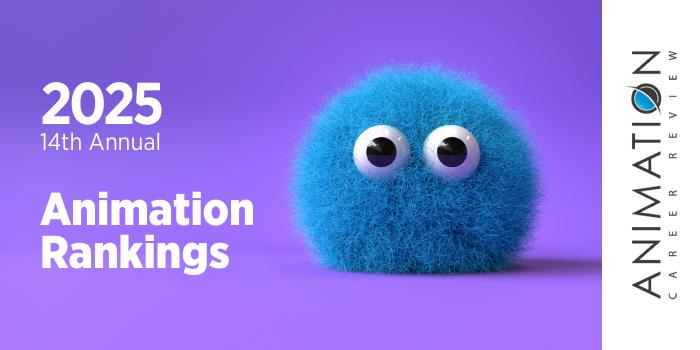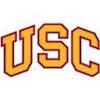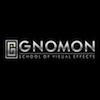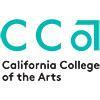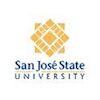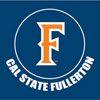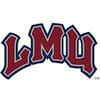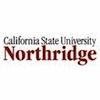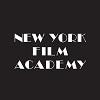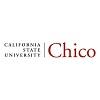University of Southern California (USC) is home to the School of Cinematic Arts (SCA). Founded in 1929, the school houses state-of-the-art facilities and equipment accessible to all animation students. One of the many standouts among SCA’s facilities is the brand new main complex. This creative space features all digital classrooms, animation production studios, post-production suites, soundstages, mixing theaters, fabrication spaces, research labs, and screening rooms that seat up to 400 people.
The Robert Zemeckis Center for Digital Arts in the School of Cinematic Arts provides additional production spaces, motion capture suites, and Trojan Vision—the University's full-service television station with programming that reaches homes across LA and many national and international outlets. USC School of Cinematic Art students also have access to the Ganek Immersive Studio; Cintiq and computer labs; and an IMAX theater.
Across SCA programs, students can collaborate with peers in other USC schools such Roski School of Art and Design, Viterbi School of Engineering, the School of Architecture, and Thornton School of Music. Other SCA features include guest speakers; courses taught by seasoned filmmakers and other industry professionals; and the student-organized USC Animation Studio Day, where students can meet with studio representatives to present their portfolios, discuss internships, and consider job opportunities.
Also within USC’s School Cinematic Arts is The John C. Hench Division of Animation + Digital Arts (Hench DADA) and the Expanded Animation Division (EAD). Both divisions provide animation programs leading to a BFA or MFA. Options include an Animation + Digital Arts BFA (Hench DADA), the Animation + Digital Arts MFA (EDA), and the Expanded Animation Research + Practice (XA) MFA (EAD).
Hench DADA also houses a 3D Animation and Cinematic Arts minor. The Interactive Media Division, within the School of Cinematic Arts, houses a Game Animation minor. The 3D Animation and Cinematic Arts minor allows students to focus in a specific area through electives. Potential focus areas include character animation, visual effects (VFX), motion capture, virtual reality (VR), and modeling. The Game Animation minor combines systems thinking and animation coursework.
Through electives, Game Animation students may explore areas such as VFX, game development, or digital effects. USC SCA minors are 16 units and all require a final project to graduate.
The Animation + Digital Arts BFA program at University of Southern California is a four-year stem-coded program that provides formal concentration options. Examples include Character Animation, Interactive Animation, VFX, Immersive Media, Documentary Animation, 3D Computer Animation, Motion Graphics, Visualizing Science, and Experimental Animation.
In addition to a concentration, BFA students will complete courses such as Story Structure for Animation; Reality Starts Here; 3D Character Performance Animation; Two-Dimensional Art Workshop; Cinematography for Animators; History of Animation; and Professionalism of Animation. Electives allow students to develop skills in additional areas of animation.
Elective examples include Live Action Integration with Visual Effects; 3D Animation for Motion Graphics (C4D); Production Design for Animation Projection Mapping Design and Production; Demystifying the TV Animation Pipeline; Real-Time Animation (Unreal Engine); Experiments in Immersive Design; Procedural Animation (Houdini); Pipeline and Character Modeling for Animation; and The World of Visual Effects.
During the second semester of year three, and in year four of the program, students will complete Ideation + Pre-Production, along with two Senior Project courses resulting in a fully rendered, animated piece, with soundtrack. Final projects are presented to a committee for critique and approval.
The Animation + Digital Arts MFA at USC is a stem-coded, three-year terminal degree program that provides mini studios for all students, ongoing workshops, and internship opportunities. Techniques and approaches explored range from hand-drawn character animation to interactive digital animation. Course examples for the program include Animation: The Art and the Industry; Expanded Animation; Fundamentals of Storytelling for Animation; Cinematic Ethics; Animation Design and Production; Animation Storyboarding Practicum; and Fundamentals of 3D Character Animation.
Elective units are an important component of the MFA program. Students must complete 15 units to graduate. Examples include World Cinema Before 1945; Survey of Interactive Media; and Seminar: Avant-Garde Film/Video.
The culminating experience for the Animation + Digital Arts MFA at University of Southern California is the master’s thesis completed across three courses including, Animation Pre-Thesis Seminar; Master’s Thesis (594a); and Master’s Thesis (594b).
The XA MFA at University of Southern California focuses on experimentation, animation research, and innovation. Designed for advanced artists, this terminal degree program consists of 50 units (minimum) completed across six semesters. Students in this unique program can select from an extensive list of research concentrations. Examples include Experimental Animation; Virtual Humans and AI; Science Visualization; Performance Gesture; Animation for Robotics; Gesture Movement; Documentary Animation; Dreams and Consciousness; Sound Design; Fine Art Animation Practice; Narrativity; and Cinematic Installations.
Courses for the USC XA MFA program are supported by exhibitions, research collaborations, and overnight field trips. Course examples include the Art of Motion in Virtual Space; Expanded Animation Production; Theory and Practice in Contemporary Animation; Art of Animation; Writing and Story Art for Vision and Motion; Expanded Animation Production; Animation Sound Design Practice; Advanced Animation Research Seminar; Applied Expanded Animation; and Survey of World Animation.
Electives allow students to focus in additional areas of animation. Elective course examples include Stop Motion Puppet and Set Design; Animation for Virtual Characters, Robotics, and AI; Contemporary Topics: Animation Drams and Consciousness; Gesture Movement for Animation; Documentary Animation Production; Stop Motion Performance; Advanced Methods and Approaches; and Directed Research.
The XA MFA program at USC culminates with the Master’s Thesis, completed over three courses: Animation Pre-Thesis Seminar, Master’s Thesis (594a), and Master’s Thesis (594b). Final XA MFA projects have focused on animation, augmented and virtual reality (AR/VR), interaction, installations, and more.
Graduates of the Animation programs at the University of Southern California are prepared to pursue leadership roles in the entertainment industry. Program alumni have been hired at major studios such as Industrial Light & Magic (ILM), DreamWorks Animation, Nickelodeon Animation Studios, Digital Domain, Pixar, Illumination, and Sony Pictures. Many USC alumni have gone on to launch their own studios or freelance businesses.
Founded in 1880, University of Southern California is the oldest private research university in the state. When it opened, the school had just 53 students and 10 faculty. Today, USC enrolls approximately 47,000 students served by a faculty of more than 4,400. This makes University of Southern California the largest school by enrollment in the state and largest private sector employer in Los Angeles.
Students at USC have access to more than 600 graduate and professional programs across 23 schools and divisions. The University of Southern California is accredited by the WASC Senior College and University Commission (WSCUC).


